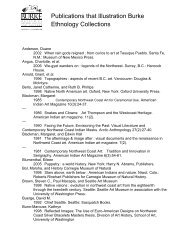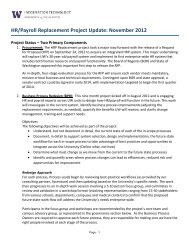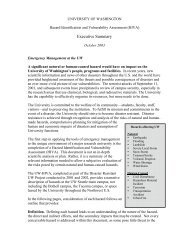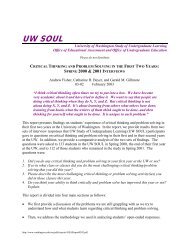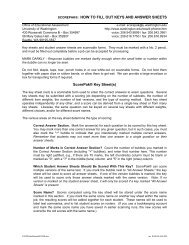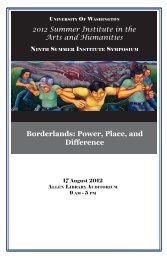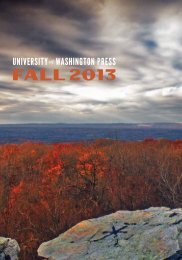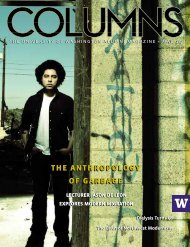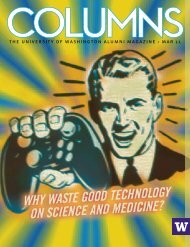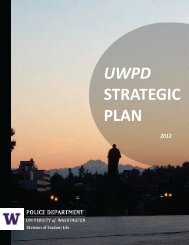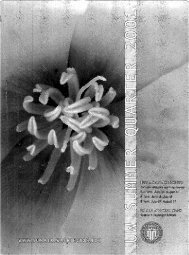PDF version - University of Washington
PDF version - University of Washington
PDF version - University of Washington
Create successful ePaper yourself
Turn your PDF publications into a flip-book with our unique Google optimized e-Paper software.
A CLASH<br />
OF CULTURE AND CLEANUP<br />
MICHAEL MOORE / MRPIX.COM<br />
DECADES OF INDUSTRIAL and urban waste have badly contaminated South Seattle’s<br />
Duwamish waterway, and the U.S. Environmental Protection Agency will determine the<br />
long-awaited, final cleanup plan <strong>of</strong> this Superfund site later this year.<br />
In the meantime, William Daniel, associate<br />
pr<strong>of</strong>essor in the School <strong>of</strong> Public<br />
Health, is working with two community<br />
organizations to conduct a health-impact<br />
assessment <strong>of</strong> the cleanup. The EPA<br />
cleanup plan will take years to complete<br />
and have an enormous impact on the<br />
health <strong>of</strong> people who use the Duwamish<br />
River or live nearby.<br />
The assessment will include nutritional<br />
and cultural impacts <strong>of</strong> fish contamination,<br />
gentrification pressures on local<br />
neighborhoods, and opportunities for local<br />
economic redevelopment. It will help<br />
decision-makers make choices to help<br />
mitigate the risks to those who live and<br />
play around the Duwamish.<br />
“The river will be cleaner but it still will not be completely safe,” Daniel says. “There will<br />
still be advisories that warn people not to catch and eat the fish.”<br />
The assessment is funded by a grant from the Health Impact Project, a collaboration <strong>of</strong><br />
the Robert Wood Johnson Foundation and the Pew Charitable Trust.—Elizabeth Sharpe<br />
DIAGNOSTICS<br />
AT A DISTANCE<br />
CLARE McCLEAN / UW MEDICINE<br />
ALMOST EVERY ADULT has had the experience <strong>of</strong> feeling terrible, leaving work and driving to a<br />
physician for tests that confirm: “Yes, it’s the flu.” Sometime in the next five years that scenario<br />
may change pr<strong>of</strong>oundly because <strong>of</strong> something called “paper-based diagnostics.”<br />
Paul Yager (right), chair <strong>of</strong> the UW Bioengineering Department, is principal investigator<br />
on two grants totaling up to $26 million that aim to move diagnostic medicine<br />
away from standard antibody testing to paper. The technique may be especially<br />
beneficial for people in developing countries, where diseases such as malaria and<br />
dengue are widespread and where lab access is limited for many people.<br />
Yager explained that a simple kind <strong>of</strong> diagnostic tool kit will allow a person to<br />
take their own urine, spit or sputum sample, drop the sample in<br />
a vial and push a button that makes the vial shake. After a few<br />
minutes a pattern <strong>of</strong> dots or lines will appear on a piece <strong>of</strong><br />
paper. The person will capture a picture <strong>of</strong> the pattern on<br />
a cell phone and then email it to a physician or a lab. UW<br />
researchers are expanding the number<br />
<strong>of</strong> paper-based tests and working<br />
for results comparable to a fully<br />
equipped laboratories.<br />
UWalum.com/Columns June 2012<br />
25



